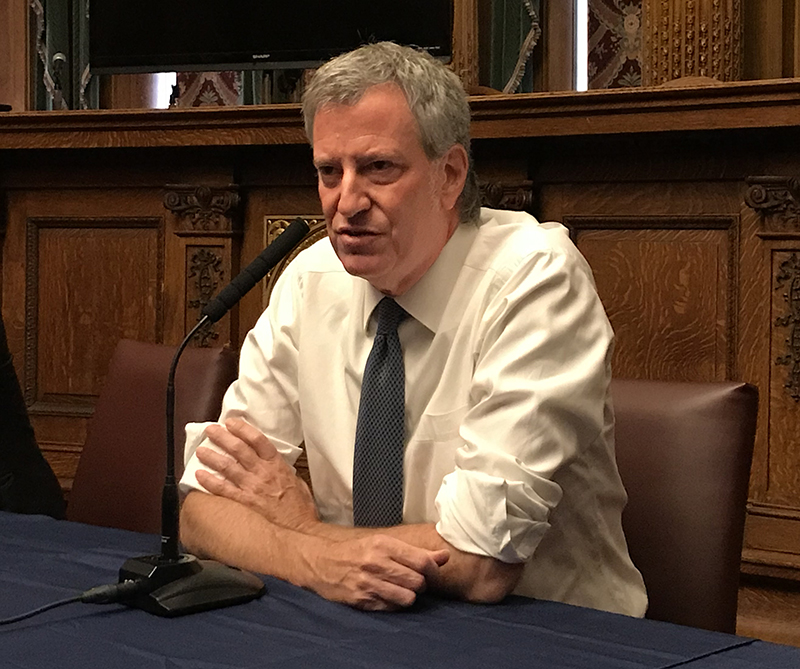De Blasio talks L train, BQE & Uber, and defends 80 Flatbush development at Brooklyn roundtable
Just chill: BQE Rehab Not a ‘Nightmare’

Overcrowded schools, skyscrapers in Boerum Hill, the cap on Uber and Lyft, the L-train shutdown, ferry service to Canarsie, the BQX, affordable housing and the ULURP process were some of the topics Mayor Bill de Blasio discussed with local Brooklyn reporters at a media roundtable on Thursday as part of his City Hall in Your Borough visit to Brooklyn.
The mayor and top officials have been packing in ribbon cuttings, touring construction projects and attending events including a city resource fair on Wednesday and a community town hall on Thursday. The weeklong borough visits are going to become a tradition, the mayor told reporters.
“Let’s face it, anyone in government needs all the feedback they can get from everyday people,” he said. “There’s nothing like getting out to the community.”

Brooklyn Boro
View MoreNew York City’s most populous borough, Brooklyn, is home to nearly 2.6 million residents. If Brooklyn were an independent city it would be the fourth largest city in the United States. While Brooklyn has become the epitome of ‘cool and hip’ in recent years, for those that were born here, raised families here and improved communities over the years, Brooklyn has never been ‘uncool’.